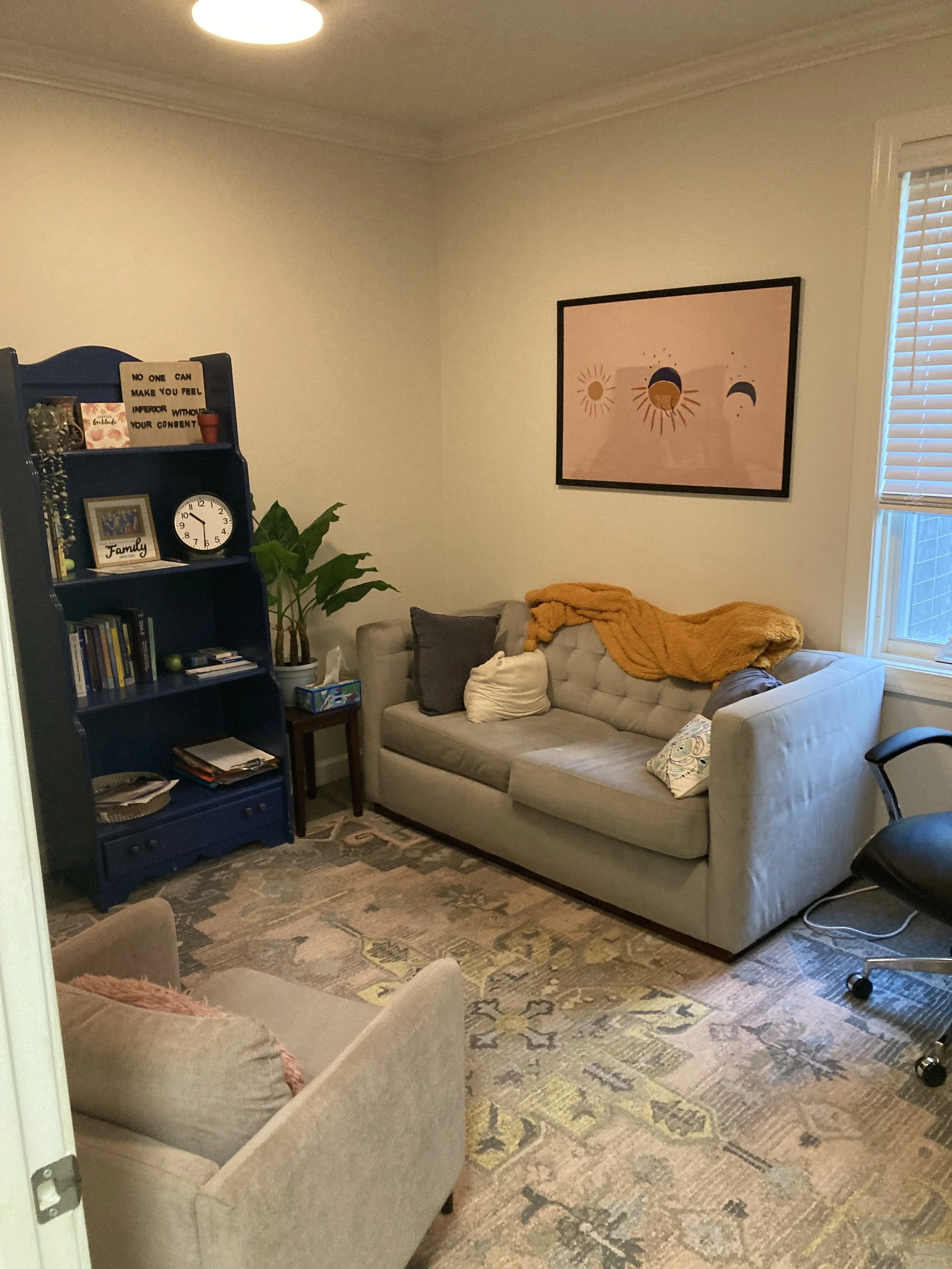
What You Need to Know
How to get Started with Counseling
If you’re ready to begin the counseling process, all you have to do is review our therapy services pages or therapist profile pages and select the counselor that best fits your needs. Then, you can call or email the counselor using the contact information located on their profile page to request an initial intake appointment. During communication with the therapist, they will share more about their availability, counseling fees, forms of acceptable payment, and important administrative policies. You will also have an opportunity to ask questions about their therapeutic approach and share some of the reasons you’ve reached out for support. Lastly, the counselor will set you up with a client account where you can complete paperwork online prior to your appointment. We request that you complete all necessary paperwork at least 24 hours before your appointment, so your therapist will have time to review it before meeting with you.
Fees and Insurance
Initial Intake Session (60-75 minutes)
$175
Individual Counseling Session (50-60 minutes)
$135
Relationship Counseling Session (50-60 minutes)
$160-$175
Individual, Family, & Couples Sessions with interns (50-60 minutes)
$40
We accept Blue Cross Blue Shield, Aetna, and some of our clinicians accept UHC plans excluding Medicare. Please check with your insurance to make sure your visit is covered and become aware of any copays or deductibles. At the time of service, you are responsible for co-pays or full payments until the deductible is met. Please check with your therapist to ensure that your insurance is accepted.
For those out of network plans, Clear Creek Counseling will do all of the electronic billing for your insurance although you will be required to make full payment to Clear Creek upfront. Your insurance may reimburse you for out of network services based on your insurance policy.
Cancellation Policy
We understand that life happens. We kindly ask that you notify your therapist at least 24 hours prior to your appointment. This allows the therapist to leave this time slot open for other clients in need.
A cancellation fee of $65 or more will occur if notice has not been given within 24 hours before your appointment, except in cases of emergencies. Please refer to your therapist’s professional disclosure statement to understand their fees for cancellation as this varies based on individual clinician rates.
What to expect in your first session?
Your first session will consist mostly of you and your therapist getting to know each other and discussing what brought you to therapy. You and your therapist will discuss treatment goals to direct the course of your treatment. Number of total sessions will vary depending on personal needs.
Offering In-Person & Telehealth Sessions
We strive to accommodate our clients by helping you feel comfortable and safe in the way that best suits you. We are all currently offering Telehealth sessions and most of our therapists are also offering in-person sessions.

University Office Front Door

University Office Entryway

University Office Waiting Room

Jessica Fields University Office

Megan Smith University Office

Mackenzie Weigel University Office

Memorie MacLeod University Office

Michelle Allen University Office

South Office Building

South Office Suite 105 Entry Door

South Office Entryway

South Office Waiting Room

Bethany Davis South Office

Steven Clemon South Office

Anna Stillman & Niral Patel South Office

Crystal O'Gorman South Office

Abigail Bates Office
